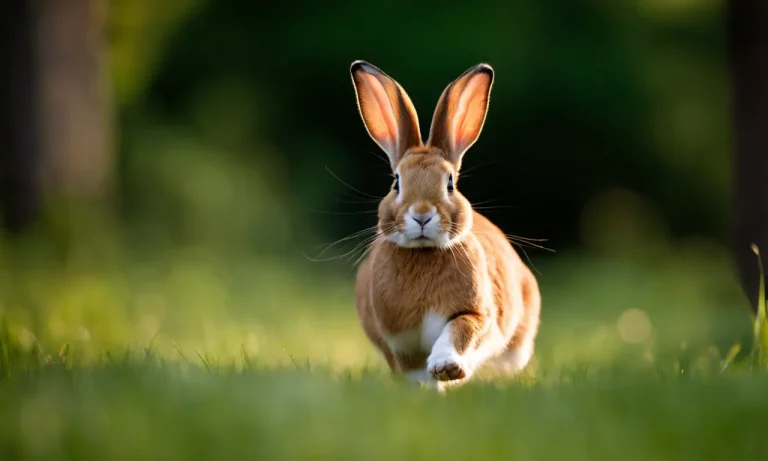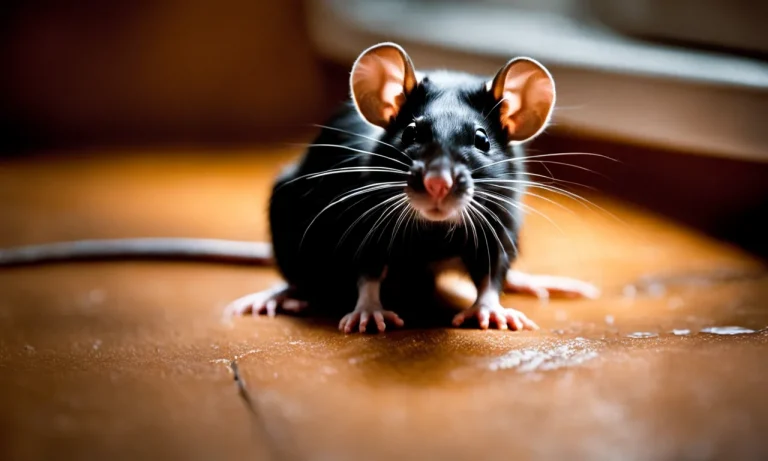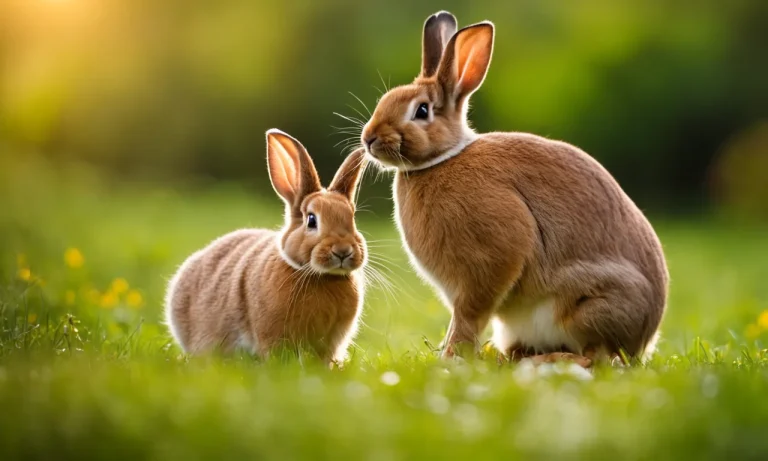Rabbits can make wonderful pets, but like any animal, they require some special care and handling. Learning how to properly pet and interact with a rabbit is key to building trust and having a happy, healthy bunny.
If you’re short on time, here’s a quick answer to your question: Gently pet your rabbit along its head and down its back, using slow strokes. Avoid sudden movements and loud noises, and let the rabbit approach you first before attempting to pet it.
In this comprehensive guide, we will cover everything you need to know about petting rabbits, from understanding their body language to step-by-step instructions for safe, proper petting techniques.
Understanding Rabbit Body Language
When it comes to petting a rabbit, it’s important to understand their body language. Rabbits communicate through various signals and behaviors, and being able to interpret these cues will help you create a bond with your furry friend.
Here are some key aspects of rabbit body language that you should be aware of:
Relaxed vs Stressed
Rabbits have different ways of expressing their comfort or discomfort. A relaxed rabbit will have a loose posture, with their ears up and slightly forward. Their body will be at ease, and they may even flop over to one side, signaling complete relaxation.
On the other hand, a stressed rabbit may have their ears flattened against their back, their body tense, and their tail tucked between their legs. It’s important to give your rabbit space and try to identify any potential stressors in their environment.
Invitation to Pet vs Avoidance
Understanding when a rabbit is open to being petted is crucial in establishing a positive interaction. Rabbits that are interested in being petted will often approach you willingly, nudging their head against your hand or even gently licking you.
They may also present their head or chin for you to stroke. Conversely, if your rabbit is avoiding petting, they may turn their head away, hop away from you, or even thump their hind leg as a warning sign. It’s important to respect their boundaries and not force any unwanted attention.
Happy Bunnies vs Scared Bunnies
A happy bunny will exhibit behaviors that indicate contentment and trust. They may purr, grind their teeth, or even binky, which is an adorable display of joy where they jump and twist in the air. Their body language will be relaxed, and they may even seek physical contact with you.
On the other hand, a scared bunny will display signs of fear and anxiety. They may cower, hide, or flatten themselves against the ground. It’s crucial to create a safe and secure environment for your rabbit to help them feel comfortable and reduce their stress levels.
Understanding rabbit body language is an essential part of petting and interacting with these adorable creatures. By being aware of their signals, you can ensure a positive and enjoyable experience for both you and your rabbit.
So, next time you spend time with your bunny, pay close attention to their body language and respond accordingly!
How to Approach and Pick Up a Rabbit
Let the Rabbit Come to You First
Approaching a rabbit in the right way is crucial to gain their trust and make them feel comfortable. Rather than rushing towards them, it is best to let the rabbit come to you first. Sit or crouch down at their eye level and extend your hand slowly towards them.
Avoid making sudden movements or loud noises that could startle them. Patience is key when it comes to building a bond with a rabbit.
Pet from Above
When petting a rabbit, it is important to do so from above. Rabbits have a blind spot directly in front of their faces, so approaching them from the side or behind is the best way to ensure they see your hand coming.
Start by gently stroking their head and ears, as most rabbits enjoy being petted in these areas. Avoid petting their backs or bellies until they are more comfortable with you.
Proper Way to Pick Up
Picking up a rabbit requires a gentle and careful approach. It is important to support their hind end and keep their body close to your chest to make them feel secure. Place one hand under their chest, between their front legs, and use the other hand to support their hindquarters.
Lift them up slowly and hold them close to your body. Remember to never pick up a rabbit by their ears or scruff as it can cause them pain and distress.
For more detailed information on how to pet a rabbit, you can refer to reputable websites such as rabbit.org or petmd.com.
Where and How to Pet a Rabbit
When it comes to petting a rabbit, it is important to know the right places to touch and how to do it gently to ensure the comfort and safety of the rabbit. Here are some guidelines on where and how to pet a rabbit:
The Head
The head is one of the safest and most enjoyable places to pet a rabbit. Gently stroke the top of their head, behind their ears, and around their face. Many rabbits enjoy having their forehead gently rubbed. Avoid touching their eyes and nose, as these areas are sensitive.
The Cheeks
Rabbits have sensitive cheeks, so it’s important to be gentle when petting this area. Using your fingertips, stroke the sides of their face and cheeks. Some rabbits may enjoy having their cheeks lightly massaged, but always pay attention to their reactions to ensure they are comfortable.
The Back
The back is another area where rabbits generally enjoy being petted. Use gentle strokes along their back, starting from the base of the neck and moving towards the tail. Avoid applying too much pressure, as rabbits have delicate spines.
If your rabbit starts to show signs of discomfort, such as flattening their ears or tensing their body, stop petting their back.
The Hindquarters
Most rabbits are not comfortable with being petted on their hindquarters. This area is sensitive and can make them feel vulnerable. It’s best to avoid touching their hindquarters unless it is necessary for grooming or medical reasons.
If you need to handle this area, do it with caution and be prepared for the rabbit to show signs of discomfort or agitation.
The Belly
While some rabbits enjoy belly rubs, not all of them do. Before attempting to pet a rabbit’s belly, observe their body language. If they are relaxed and lying on their side, it may be a sign that they are open to belly rubs.
However, if they tense up or show signs of discomfort, avoid touching their belly. Always respect the rabbit’s boundaries and preferences.
The Feet
Rabbits are generally sensitive about their feet being touched. It’s best to avoid petting or handling their feet, as it can cause stress and anxiety. If you need to handle their feet for grooming or medical purposes, consult a veterinarian or an experienced rabbit handler for guidance on how to do it safely and without causing distress to the rabbit.
Remember, every rabbit is unique, and their preferences for being petted may vary. It’s important to observe your rabbit’s body language and reactions to determine what they enjoy and what makes them uncomfortable.
Building trust and a positive bond with your rabbit will help establish a healthy and enjoyable petting routine.
Petting No-Nos
When it comes to petting rabbits, there are certain things you should avoid to ensure their comfort and safety. Here are some important “petting no-nos” to keep in mind:
Avoid the Stomach
Rabbits have a sensitive stomach area, and they generally don’t enjoy being touched there. It’s best to avoid petting their stomachs altogether. Instead, focus on petting their head, back, and sides, where they are more likely to enjoy your touch.
Never Restrain or Restrict
Rabbits are naturally prey animals, and being restrained or restricted can cause them stress and anxiety. Avoid holding them tightly or restraining their movements. Let them have the freedom to hop away if they feel uncomfortable or overwhelmed.
No Sudden Movements
Rabbits are easily startled by sudden movements or loud noises. To create a calm and safe environment for petting, make sure to move slowly and gently. This will help your rabbit feel more at ease and allow for a more enjoyable petting session.
Limit the Session
While it may be tempting to pet your rabbit for long periods of time, it’s important to remember that they have their own limits. Rabbits are creatures of habit and can become stressed or overwhelmed if petting sessions are too long.
Keep the petting sessions short and sweet to ensure your rabbit’s comfort.
Watch for Signs of Stress
Every rabbit has its own unique personality and comfort level with petting. It’s crucial to pay attention to your rabbit’s body language and signals. If your rabbit starts to show signs of stress, such as flattening their ears, thumping their hind legs, or trying to escape, it’s a clear indication that they need a break.
Respect their boundaries and give them space.
Remember, understanding and respecting your rabbit’s boundaries is crucial for a positive petting experience. By avoiding these petting no-nos, you can help create a trusting bond with your furry friend and ensure their well-being.
Tips for Safe, Enjoyable Petting
Let the Rabbit Set the Pace
When it comes to petting a rabbit, it’s important to let the rabbit set the pace. Rabbits are naturally cautious animals and may take some time to warm up to being touched. Allow the rabbit to approach you and indicate its readiness for petting.
Signs that a rabbit is comfortable include relaxed body language, grooming itself, and approaching with curiosity. Respect the rabbit’s boundaries and don’t force it to be petted if it shows signs of discomfort.
Use Calm, Gentle Touch
When petting a rabbit, use calm and gentle touch to ensure their comfort. Avoid making sudden movements or applying too much pressure. Rabbits have delicate bones, so it’s important to be gentle to prevent any injuries. Stroke the rabbit’s back or sides with slow and gentle movements.
Many rabbits enjoy having their forehead or cheeks gently stroked as well. Observe the rabbit’s reaction to your touch and adjust accordingly to ensure a positive experience.
Keep Sessions Short
Rabbits have short attention spans and may become overwhelmed if petting sessions are too long. Keep the petting sessions short, especially in the beginning, to prevent the rabbit from becoming stressed.
Start with just a few minutes of petting and gradually increase the duration as the rabbit becomes more comfortable. This will help create a positive association with petting and make the experience more enjoyable for both you and the rabbit.
Reward with Treats
Positive reinforcement is a great way to encourage rabbits to enjoy being petted. After a successful petting session, reward your rabbit with a small treat. This will help reinforce the positive experience and encourage the rabbit to associate petting with something pleasant.
However, be mindful of the rabbit’s diet and choose appropriate treats that are safe for rabbits.
Handle with Care
When picking up or holding a rabbit, it’s important to handle them with care. Support their body by placing one hand under their chest and the other hand under their hindquarters. Lift them gently and securely, ensuring that their weight is evenly distributed.
Avoid grabbing or squeezing the rabbit, as this can cause them to become frightened or injured. Always supervise children when they are handling rabbits to ensure their safety and the rabbit’s well-being.
Conclusion
Petting your rabbit can be an extremely rewarding experience for both of you when done properly. By understanding your bunny’s body language, letting them take the lead, using gentle strokes, and avoiding sensitive areas, you can build an amazing bond of trust.
With time and patience, your rabbit will look forward to cuddle time and affection.
Always put your rabbit’s comfort first, watch for any signs of stress, and let petting sessions be led by your bunny. With the tips in this guide, you and your rabbit will enjoy happy, safe snuggles for years to come.






